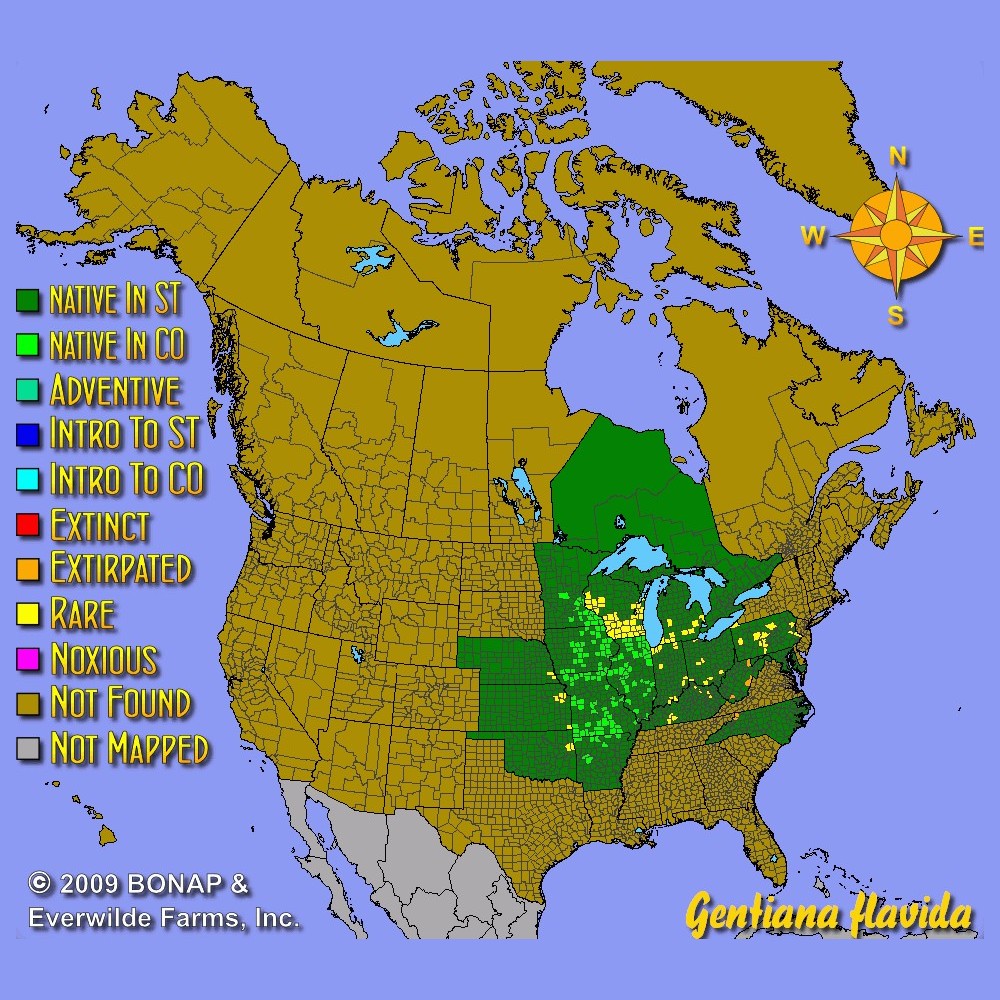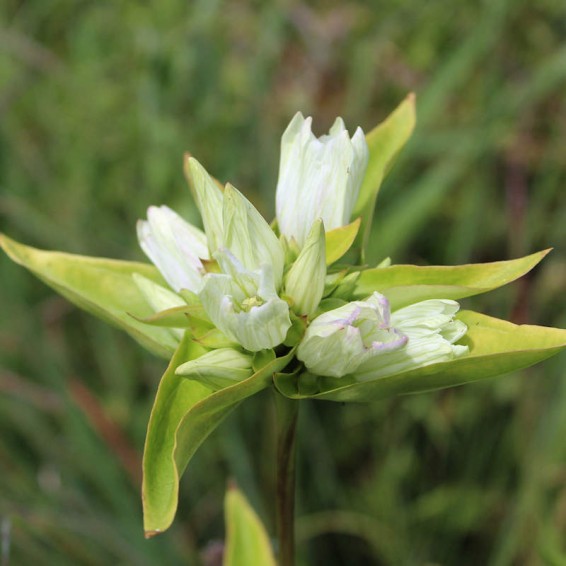Cream Gentian Seeds
- HOW TO GROW
- FAST FACTS
- REVIEWS
HOW TO GROW
Sowing: To break the cream gentian seed's dormancy, mix the seed with moist sand and store it in the refrigerator for 60-90 days before planting. Scatter the seed on the surface of the soil, then press it in lightly. Keep the soil moist, but water carefully to avoid disturbing the seed; keep the soil temperature at about 70 degrees F. Germination may be slow and irregular, but should begin to occur within 4 weeks. Transplant two seedlings each in individual pots, handling very carefully to prevent breaking the hair-like roots.
Growing: Keep the seedlings moist as they develop, which will happen very slowly. In their first year, the seedlings may only develop several leaves. If the seedlings are overwintered indoors before transplanting, they will need very careful attention since they do not appreciate transplanting at a larger size. They must be regularly watered, though they can tolerate slightly dry soil. Full bloom may not occur until their second or third season of growth. Mature plants may self-seed in good growing conditions. This plant does not appreciate extreme heat or drought, though it is cold hardy and adapts well to marshy areas or water's edge. This flower attracts many types of bees.
Harvesting: For fresh flowers, cut long stems of flowers that have just opened and place them in water immediately; strip the leaves that will fall below the water.
Seed Saving: After blooming, the flowers develop into papery, light brown capsules with ripe seed inside. Cut them from the stem or simply shake the entire plant over a container to remove the fine, tiny oval seeds. Germination rates will be best if the Gentiana flavida seed is planted immediately, but it will remain viable for several years if stored properly. Store the seed in a cool, dry place.
FAST FACTS
Common Names: Creamy Gentian
Latin Name: Gentiana flavida
Species Origin: US Native Wildflower
Type: Native Wildflowers
Life Cycle: Perennial
USDA Zones: 4, 5, 6, 7
US Regions: Midwest, Northeast
Seeds per Ounce: 160,000
Stratification: Cold/Wet for 8 Weeks
Germination Ease: Stratify 8 Weeks
Sunlight: Full Sun, Part Sun
Height: 24 Inches
Color: Cream
Bloom Season: Blooms Late Summer, Blooms Early Fall
Uses: Cut Flowers, Dried Flowers
So far so good
Have not planted these yet. Seeds came in a durable foil packet. They came quickly after ordered. So far so good. Very pleased.
DESCRIPTION

HOW TO GROW
Sowing: To break the cream gentian seed's dormancy, mix the seed with moist sand and store it in the refrigerator for 60-90 days before planting. Scatter the seed on the surface of the soil, then press it in lightly. Keep the soil moist, but water carefully to avoid disturbing the seed; keep the soil temperature at about 70 degrees F. Germination may be slow and irregular, but should begin to occur within 4 weeks. Transplant two seedlings each in individual pots, handling very carefully to prevent breaking the hair-like roots.
Growing: Keep the seedlings moist as they develop, which will happen very slowly. In their first year, the seedlings may only develop several leaves. If the seedlings are overwintered indoors before transplanting, they will need very careful attention since they do not appreciate transplanting at a larger size. They must be regularly watered, though they can tolerate slightly dry soil. Full bloom may not occur until their second or third season of growth. Mature plants may self-seed in good growing conditions. This plant does not appreciate extreme heat or drought, though it is cold hardy and adapts well to marshy areas or water's edge. This flower attracts many types of bees.
Harvesting: For fresh flowers, cut long stems of flowers that have just opened and place them in water immediately; strip the leaves that will fall below the water.
Seed Saving: After blooming, the flowers develop into papery, light brown capsules with ripe seed inside. Cut them from the stem or simply shake the entire plant over a container to remove the fine, tiny oval seeds. Germination rates will be best if the Gentiana flavida seed is planted immediately, but it will remain viable for several years if stored properly. Store the seed in a cool, dry place.
FAST FACTS
Common Names: Creamy Gentian
Latin Name: Gentiana flavida
Species Origin: US Native Wildflower
Type: Native Wildflowers
Life Cycle: Perennial
USDA Zones: 4, 5, 6, 7
US Regions: Midwest, Northeast
Seeds per Ounce: 160,000
Stratification: Cold/Wet for 8 Weeks
Germination Ease: Stratify 8 Weeks
Sunlight: Full Sun, Part Sun
Height: 24 Inches
Color: Cream
Bloom Season: Blooms Late Summer, Blooms Early Fall
Uses: Cut Flowers, Dried Flowers
Reviews
Review
So far so good
Have not planted these yet. Seeds came in a durable foil packet. They came quickly after ordered. So far so good. Very pleased.




